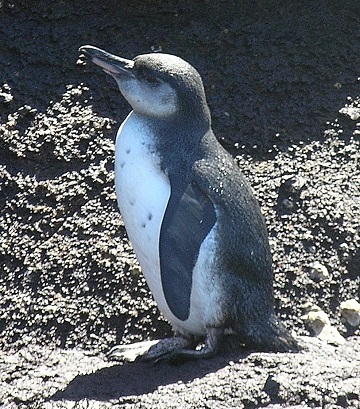630422-endangered.jpg

The Galapagos penguin is one of more than 5600 threatened or endangered species. Credit: SaraYeomans, CC BY 2.0
Only one species of penguin lives north of the equator—and it’s nowhere near the North Pole. Instead, it inhabits the warm, sunny Galapagos Islands, off the coast of South America. But it’s endangered—its population has dwindled to just a couple of thousand. Without help, it could vanish.
The Galapagos penguin is one of more than 5600 species of birds, fish, turtles, and other marine critters that need help. They’re listed as threatened, endangered, or critically endangered by an international organization. The United States maintains its own endangered species list.
To be listed, a species has to be in danger of becoming extinct, or disappearing from a particular region. There’s no specific number to guide the process—no minimum population, for example. But before a species is declared “threatened” or worse, scientists evaluate its numbers, its habitat, how quickly it reproduces, the threats it faces, and other factors.
Being on the “endangered” list provides various levels of protection. In the United States, protection is provided by the Endangered Species Act. It bans hunting the species, guards its habitat, and takes other steps to keep it from vanishing.
And there are many cases where conservation efforts have helped species rebound. In 1941, there were only about 16 known whooping cranes in the U.S. With decades of work, though, today the population is more than 800. The crane is still endangered—but at least it’s still around.

